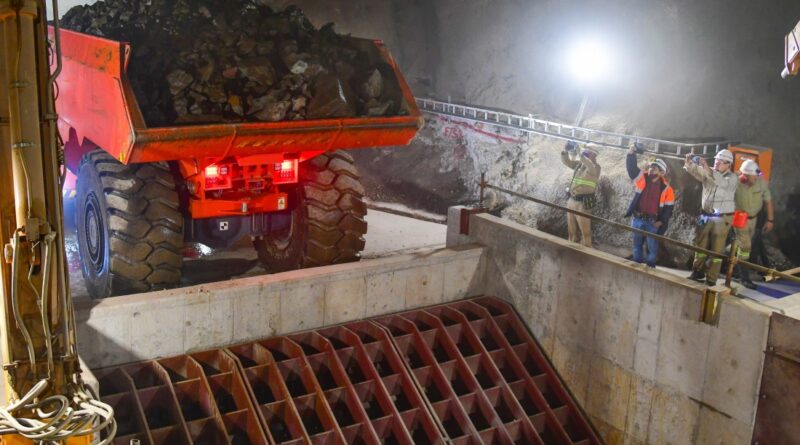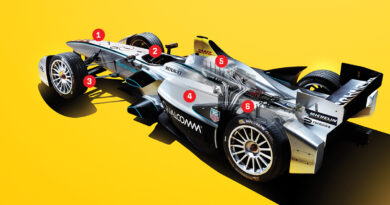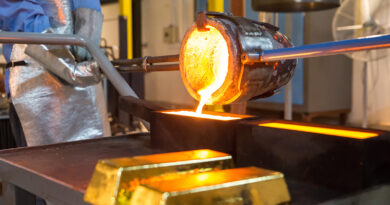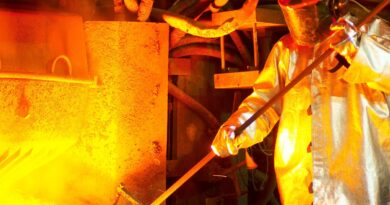Kakula Copper enters zone of ultra-high-grade ore
Robert Friedland and Yufeng “Miles” Sun, Co-Chairmen of Ivanhoe Mines, have announced that excellent progress is being made advancing underground mine development at the Kakula Mine in the Democratic Republic of Congo (DRC), with current mining grades of up to 11% copper in one of the access drives being advanced from the northern decline.
Kakula’s northern and southern dual access drives are expected to be connected (the mining term is “holing”) next month, allowing highly-productive mining (stoping) operations to begin in high-grade zones. Approximately 260 metres of tunneling remains until the access drives are connected (see figures 1 and 2).
“Development of the dual access drives from Kakula’s northern decline has entered a zone of chalcocite-rich ore grading up to 11% copper over a height of 6.6 metres,” said Mr. Friedland. “These copper grades are extraordinary in a global context, but are not unexpected. They are real-time confirmation of the exceptional quality of the Kakula resource, which sits at the apex of any ranking worldwide.”
In addition, access drift 1 from Kakula’s southern decline has moved from the medium-grade ore zone (+5 copper) into the high-grade ore zone, and currently is traversing the +8% copper zone as it approaches the “holing” position in the centre of the deposit. Access drift 2 from Kakula’s southern decline currently is traversing the +5% copper zone and is expected to quickly enter the +8% copper zone (see figures 1 and 2).
“We are looking forward to achieving our first “holing” between the northern and southern declines,” said Mr. Friedland. “It will open up important high-grade copper reserves, and enable ventilation to flow through dedicated underground airways, which have been developed between Kakula’s northern and southern declines. This marriage between Kakula’s northern and southern declines will facilitate the ramp up in production and dramatically increase the efficiency of our underground logistics, and further improve safety.”
Ben Munanga, General Manager of Ivanhoe Mines Energy and a senior member of the executive management team at Kamoa Copper, stated: “We have made excellent progress upgrading the Mwadingusha hydroelectric power station and at the new Western Dispatch substation in Kolwezi. In December, we expect to tie in the 30-kilometre, 220-kilovolt (kV) power line connecting this substation to Kamoa-Kakula, and supply the mine with reliable and clean hydro-generated electricity from the national grid.”
The upgrading work at the 72-megawatt Mwadingusha hydropower plant is nearing completion and electricity from all of Mwadingusha’s six turbines is expected to be integrated into the national power grid in the first quarter of 2021.
The work is being conducted by engineering firm Stucky, of Lausanne, Switzerland, under the direction of Ivanhoe Mines and its joint-venture partner, Zijin Mining Group, in conjunction with the DRC’s state-owned power company, La Société Nationale d’Electricité (SNEL).
“A long-term, sustainable supply of electricity is essential to Ivanhoe’s vision to develop Kamoa-Kakula in an environmentally and socially responsible manner,” said Mr. Friedland. “Hydropower is the cleanest energy solution for Kamoa-Kakula and will ensure the project will be among the world’s lowest greenhouse gas emitters per unit of copper produced.”
Mr. Friedland also said that a recent, independent audit of Kamoa-Kakula’s greenhouse gas intensity metrics performed by Hatch Ltd., of Mississauga, Canada, a leading, international environmental consulting firm, confirmed that Kamoa-Kakula will be among the world’s lowest greenhouse gas emitters per unit of copper produced, validating the project’s commitment to be a leader in environmentally-responsible copper mining.
In addition, approximately one half of the mine’s tailings will be mixed with cement and pumped back underground to fill mined-out voids, resulting in a surface tailings containment facility that is tiny compared to other major mines.
Tresor Kalenga Musoya (top), Liang Yang (middle) and Chanzhong Yang (bottom) installing the 220-kV power line that will transport clean, renewable hydropower from the DRC national grid to the Kamoa-Kakula Project.




